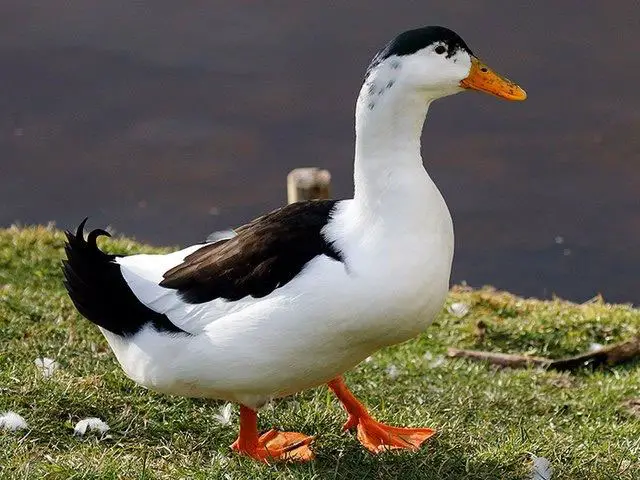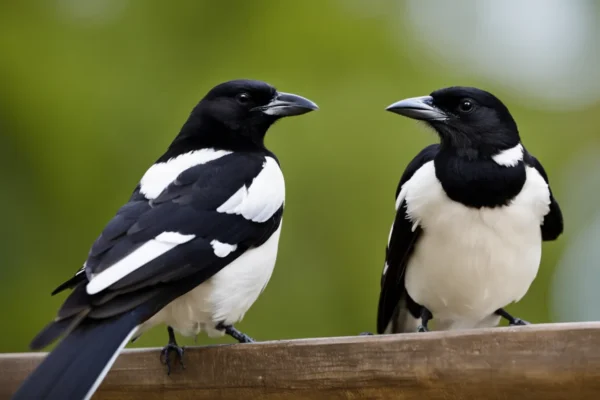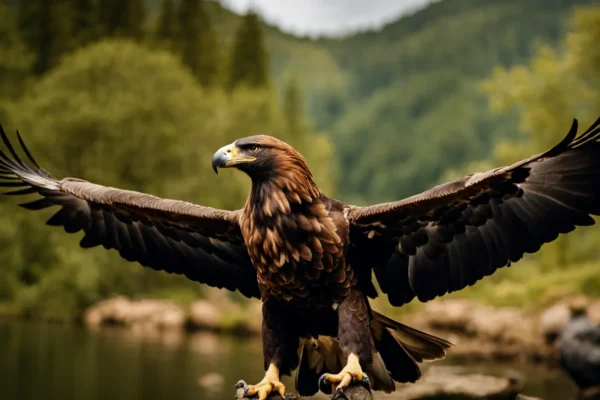The world’s bird species number over 10,000, yet their sizes and weights vary wildly. Bird weights vary greatly, with small hummingbirds weighing just a few grams and gigantic ostriches topping the scales at over 150 kg. But what is the average weight of a bird?
Continue reading for a detailed summary of bird weights for various species.
This is a simple response in case you’re pressed for time: Birds of prey such as sparrows and finches typically weigh between 10 and 60 grams. Larger birds, such as gulls, ravens, and crows, weigh between 300 and 1,500 grams. The Kori Bustard, the biggest flying bird, with a weight of around 18–19 kg.
Common Bird Groups’ Average Weights:
Hummingbirds: 2–6 grams
Hummingbirds are among the world’s lightest birds, distinguished for their little stature and remarkable flight capabilities. They usually weigh two to six grams, or about the same as a cent or many paperclips.
They can float in midair and move quickly and precisely from blossom to flower because to their lightweight bodies.
Songbirds small: 10–60 grammes
Finches, sparrows, and warblers are examples of little songbirds that weigh between 10 and 60 grams. These birds may often be heard singing their lovely songs in gardens and woodlands. These songbirds are little, but their vocals are strong, and they can sing a wide range of intricate tunes to one other.
Doves and pigeons: 100–350 grammes
Weighting between 100 and 350 grams, pigeons and doves are often seen in metropolitan settings. These birds are often connected to peace and love because of their distinctive cooing noises. While doves are often seen as symbols of innocence and purity, pigeons are very adaptive and may be found in cities all over the globe.
300–1,500 grams for large corvids
Large corvids, such as ravens and crows, weigh between 300 and 1,500 grams. These clever birds are renowned for their intricate social habits and capacity for problem-solving. They can copy noises they hear in their surroundings, including human speech, making them skilled mimics as well.
Large raptors: 1-4 kg
Large raptors, such owls, hawks, and eagles, may weigh between one and four kilos. These predatory birds capture and devour their prey with the help of their strong talons and keen beaks. They are skilled hunters in the sky because of their extraordinary vision, which allows them to detect tiny creatures at a long distance.
90–150 kg of ostriches
The biggest birds on Earth, ostriches, may weigh anything from 90 to 150 kg. These African native birds lack wings are distinguished by their long necks, powerful legs, and unusual plumage. Ostriches are very fast runners, capable of reaching up to 70 kilometers per hour, even though they cannot fly.
What Affects a Bird’s Weight
Regarding bird weight, a number of elements are involved. Depending on the species, age, gender, habitat, food, and seasonal variations, these characteristics might differ significantly.
Animal species
The species itself is one of the most important variables influencing bird weight. The average weights of various bird species vary. A hummingbird weighs just a few grams, but a bald eagle typically weighs between 10 and 14 pounds.
Each species’ different weights are influenced by factors such as size, body composition, and way of life.
Gender and Age
The weight of a bird is also influenced by its age and gender. Birds go through phases of growth and development much as people do. Because their muscles and feathers are still growing and developing, younger birds tend to weigh less.
Males and females of the same species may also weigh differently, with males sometimes being somewhat bigger and heavier than females.
Lifestyle and Nutrition
A bird’s nutrition and environment have a significant influence on its weight. Birds may have access to varying food sources depending on their habitat, which may have an immediate impact on their weight. Because human-provided food is more readily available in urban locations, birds may have a more varied diet than their counterparts in rural regions, which might lead to variances in weight.
Furthermore, birds that have access to a lot of food may weigh more than birds that have fewer food alternatives.
Variation Seasonally
The weight of the bird might also vary seasonally. Certain bird species travel great distances for seasonal purposes, and the lengthy flights and scarcity of food may cause them to lose weight. However, in order to sustain the energy-intensive aspects of reproduction, such nest building and incubation, birds may put on weight during breeding seasons.
These annual variations in weight are normal and necessary for the survival and successful reproduction of birds.
Researchers and bird aficionados may learn more about the biology, ecology, and behavior of these fascinating species by comprehending the elements that affect bird weight. We may get a deeper understanding of the remarkable variety and adaptability of birds in their natural habitat by researching these variables.
Finding the Precise Weight of a Bird
There are several techniques for precisely determining a bird’s weight when it comes to knowing its weight. These techniques include weighing wild birds that have been captured, calculating weight based on size, and employing scales.
Scale-using
Using specialist bird scales is one of the most accurate methods to weigh a bird. The safety of the bird throughout the weighing procedure is guaranteed by the delicate and unobtrusive design of these scales.
Researchers, avian enthusiasts, and veterinarians often use bird scales to get vital information on the health, development, and migratory patterns of birds. Scientists may track variations in a bird’s weight that can point to modifications in its nutrition, environment, or general health by periodically weighing the bird.
Calculating weight based on dimensions
Using the bird’s size as a guide, you may also approximate its weight if you don’t have access to a specialist bird scale. The sizes and body types of different bird species might provide information about their weight.
For instance, bigger birds—like owls and eagles—weigh more than smaller ones, like finches and sparrows. You may still get a general idea of a bird’s weight with this approach, even if it is not as exact as using scales.
Weighing wild birds that have been caught
To get precise weight readings, it could sometimes be required to catch and weigh wild birds. Researchers and ornithologists who study bird populations and behavior often use this strategy.
To reduce stress and injury to the bird, humane and ethical catching techniques are crucial. A scale or other weighing instrument may be used to determine the bird’s weight after it has been captured. This information may provide important insights on the wellbeing and state of populations of wild birds.
It is important to remember that a bird’s weight might change based on age, gender, and the time of year it breeds. As such, while evaluating weight measurements, these variables must be taken into account.
For additional in-depth details on bird weight and measuring methods, it’s also a good idea to refer to reputable sources like scientific publications, birdwatching associations, and websites dedicated to wildlife conservation.
The Significance of Bird Weight
When it comes to several facets of avian study and conservation, bird weight is a crucial indicator. By determining the weight of birds, scientists may learn important things about their general health, behavior, and ecological functions. Bird weight is important for the following reasons:
Monitoring health
Bird weight tracking may provide important information about the health of the birds. Gaining or losing weight may be a sign of a number of illnesses, including diseases, reproductive problems, and starvation. Through consistent weight monitoring of individual birds or communities, researchers may detect any health issues and take appropriate measures to address them.
This supports the preservation and administration of avian species.
2. Medication dosage
Precise administration of medicine is essential for the health of birds receiving veterinary treatment. The right amount of medicine, such as anesthetic, painkillers, or antibiotics, depends on the weight of the bird.
Incorrect dose administration might seriously harm a bird’s health and perhaps jeopardize its recuperation. As a result, determining a bird’s weight is crucial to provide the best possible medical treatment.
3. Recognizing the ability to migrate
Understanding the weight of birds is important for understanding their migratory capabilities and patterns. Birds use their energy stores to power their long-distance flights during migration. Researchers may learn more about migrating birds’ energy use, feeding techniques, and even prospective stopover locations by weighing the birds before and after their trips.
The preservation of significant migratory routes and ecosystems is aided by this knowledge.
4. Examining the dangers of extinction
An additional factor in determining a species’ susceptibility to extinction is its weight. Larger-bodied birds are more vulnerable to environmental changes and habitat loss because they typically have lower reproductive rates and longer generation periods.
Through an examination of the weight distribution across various bird species and populations, scientists may enhance their comprehension of the possible hazards of extinction and adjust the focus of conservation efforts correspondingly.
Final Thought
Bird weights are remarkably varied, ranging from a few grams for the tiny hummingbirds to over 100 kilos for the biggest ostriches. Avian weights depend on a number of factors, including species, age, habitat, and season.
Weighing birds carefully enables researchers to determine prescription dosages, evaluate health, investigate migratory potential, and more. Consequently, even though birds have light feathers, their weights indicate a lot about their existence.





![Raven vs Crow [Everything you need to know]](https://birdsology.com/wp-content/uploads/2023/09/53-600x400.jpg)